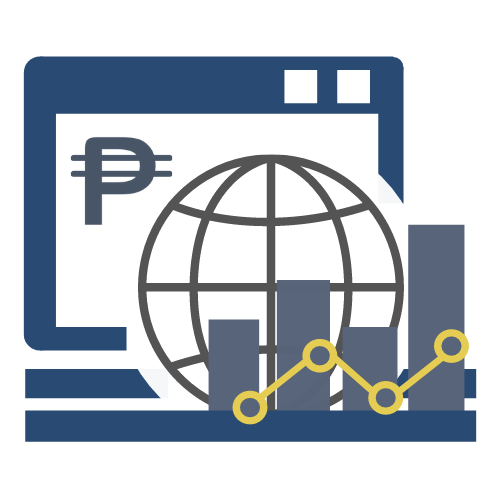Indicators

Existing competitiveness indicator systems were used as guidelines in forming the framework behind the Index. Four convergent pillars were found among the most common key indicator areas: Economic Dynamism, Government Efficiency, Infrastructure, Resiliency, and Innovation. The framework integrates these pillars of local economic development and competitiveness up to the regional, national, and global levels.

ECONOMIC DYNAMISM creates stable expansion of businesses and industries and higher employment. The pillar matches the output and productivity of the local economy with the local resources. Localities are centers of economic activities, and due to this, business expansion and job creation are easily observable in local settings. It is divided into ten indicators:
- Local Economy Size (as measured through business registrations, capital, revenue, and permits)
- Local Economy Growth (as measured through business registrations, capital, revenue, and permits)
- Active Establishments in the Locality
- Safety Compliant Business
- Employment Generation
- Cost of Living
- Cost of Doing Business
- Financial Deepening
- Productivity
- Presence of Business and Professional Organizations

GOVERNMENT EFFICIENCY refers to the quality and reliability of government services and government support for effective and sustainable productive expansion. This factor looks at government as an institution that is generally not corrupt; able to protect and enforce contracts; apply moderate and reasonable taxation and is able to regulate proactively. It is divided into ten indicators:
- Compliance to National Directives
- Presence of Investment Promotions Unit
- Compliance to ARTA Citizens Charter
- Capacity to Generate Local Resource
- Capacity of Health Services
- Capacity of School Services
- Recognition of Performance
- Getting Business Permits
- Peace and Order
- Social Protection

INFRASTRUCTURE pertains to the physical assets that connect, expand, and sustain a locality and its surroundings to enable provision of goods and services. It involves basic inputs of production such as energy, water; interconnection of production such as transportation, roads and communications; sustenance of production such as waste, disaster preparedness, environmental sustainability; and human capital formation infrastructure. It is divided into ten indicators:
- Road Network
- Distance to Ports
- Availability of Basic Utilities
- Transportation Vehicles
- Education
- Health
- LGU Investment
- Accommodation Capacity
- Information Technology Capacity
- Financial Technology Capacity

RESILIENCY applies to the capacity of a locality to build systems that can absorb change and disturbance and being able to adapt to such changes. It spans frameworks that bind LGUs and their constituents to prepare for possible shocks and stresses; budgeting for disaster risk reduction; hazard/risk identification mechanisms; resilience-related infrastructure; and resilience-related mechanisms. It is divided into ten indicators:
- Land Use Plan
- Disaster Risk Reduction Plan
- Annual Disaster Drill
- Early Warning System
- Budget for DRRMP
- Local Risk Assessments
- Emergency Infrastructure
- Utilities
- Employed Population
- Sanitary System

INNOVATION refers to the ability of a locality to harness its creative potential to improve or sustain current levels of productivity. It hinges mainly on the development of creative capital which are human resources, research capabilities, and networking capacities. It is divided into ten indicators:
- Start Up and Innovation Facilities
- Innovation Financing: R&D Expenditures Allotment
- STEM graduates
- Intellectual Property Registration
- ICT Use: E-BPLS Software
- Internet Capability
- Availability of Basic Internet Service
- Online Payment Facilities
- ICT Plan
- New Technology